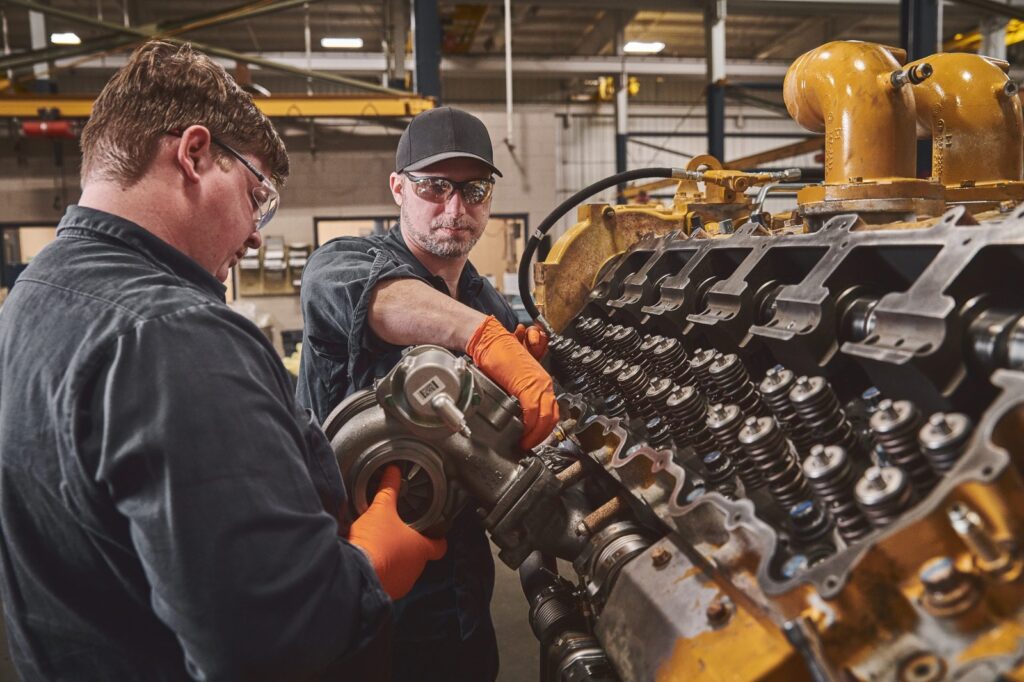Do you struggle to keep a balance between mechanics and delivery at your heavy-duty repair store?
Believe it or not, the right technology can completely change that balance. It can turn unexpected downtime into planned work, and a reliable supply chain can take the place of frantic searches for parts. When shop owners use smart tools and stick to strict procedures, they not only make more products, but they also build their reputation for being reliable and trustworthy with customers.
Better Maintenance for Steady Performance
Most heavy-duty shops still have set times for maintenance activities. They use real-time data from sensors and diagnostics, and predictive maintenance makes changes. Shops can fix things when they really need it instead of every 10,000 miles. This cuts down on emergency repairs, saves money on overtime, and helps keep expensive breakdowns from happening.
Tools for predictive maintenance turn repairs that are needed into planned work. That control keeps technicians busy, vehicles on the road, and customers happy. Shops that use predictive models see a clear drop in both downtime and the cost of maintenance as a whole.
Heavy duty repair shop invoice software replaces paper notes and spreadsheets that are all over the place, and scheduling that is based on memory. You can keep track of every repair order and improve accountability as the system keeps records of which technician worked on which order.
It also cuts down on having to fix things more than once because detailed records make sure that every problem is fully fixed and logged.
Modern repair shops depend on CMS tools to get things done. They coordinate people, parts, and processes so that everything moves in the same direction: forward.
Real-Time Diagnostics
Diagnostic systems let you see how well your heavy duty machine is doing all the time. They keep an eye on things like oil pressure and engine performance and send that information to the shop right away. If something goes wrong, technicians can fix it before it turns into a breakdown.
Giving technicians mobile tools to work with
The way your repair shop operates is defined by modern technological solutions. You don’t have to deal with printed job cards anymore, as your POS system gives you all the information you need.
This stops people from entering the same data twice and makes sure that every step of the repair is properly tracked. That integration cuts down on waiting, stops confusion, and makes sure that expensive bay time is always useful.
Analytics make inventory smarter
Having a lot of parts on hand can be good or bad. Heavy parts take up space and money. But not having the right part on hand can make a job take days longer. Analytics can help you find the right balance.
Shops can figure out which parts to keep in stock and which to order on demand by looking at how often they are used, how often they break, and how long it takes suppliers to deliver them.
Building Trust by Talking Clearly
Fleet operators and drivers want more than just a quick fix; they want things to be predictable. Automated updates on job progress, estimates, and completion times make the repair process a clear partnership.
It builds trust when customers can see their service history, track their repairs, and see pictures of the work before and after. Shops that make it easy for customers to talk to them get more repeat business because customers feel in control and not left guessing.
Shops can also set prices with confidence because of openness. Customers are willing to pay for the peace of mind that comes with a process that is open and reliable.
Using AI and data analysis
It’s not just big fleet operators who can use AI and data analytics anymore. Today, even small businesses can use analytics to find problems that happen over and over again, like brakes that wear out too quickly or parts that break too soon.
Shops can use AI-driven insights to focus on the most important repairs, cut down on warranty claims, and make technicians more accurate. Penske and other big companies are already using AI to predict when they will need service. This is the way that maintenance will be done in the future.
Start with a small group of vehicles or fleets, and then grow as you see savings that can be measured. Every success gives you more confidence and energy to make bigger changes in the digital world.
Key Takeaways
When you’re running a heavy duty repair shop, it’s not enough to cut corners or rush jobs to make repairs more efficient. It’s about making decisions based on data and working together, both of which are not possible if you don’t use a centralized system. Here, repair shops that stand out from the rest use modern repair shop software to streamline their operations.


